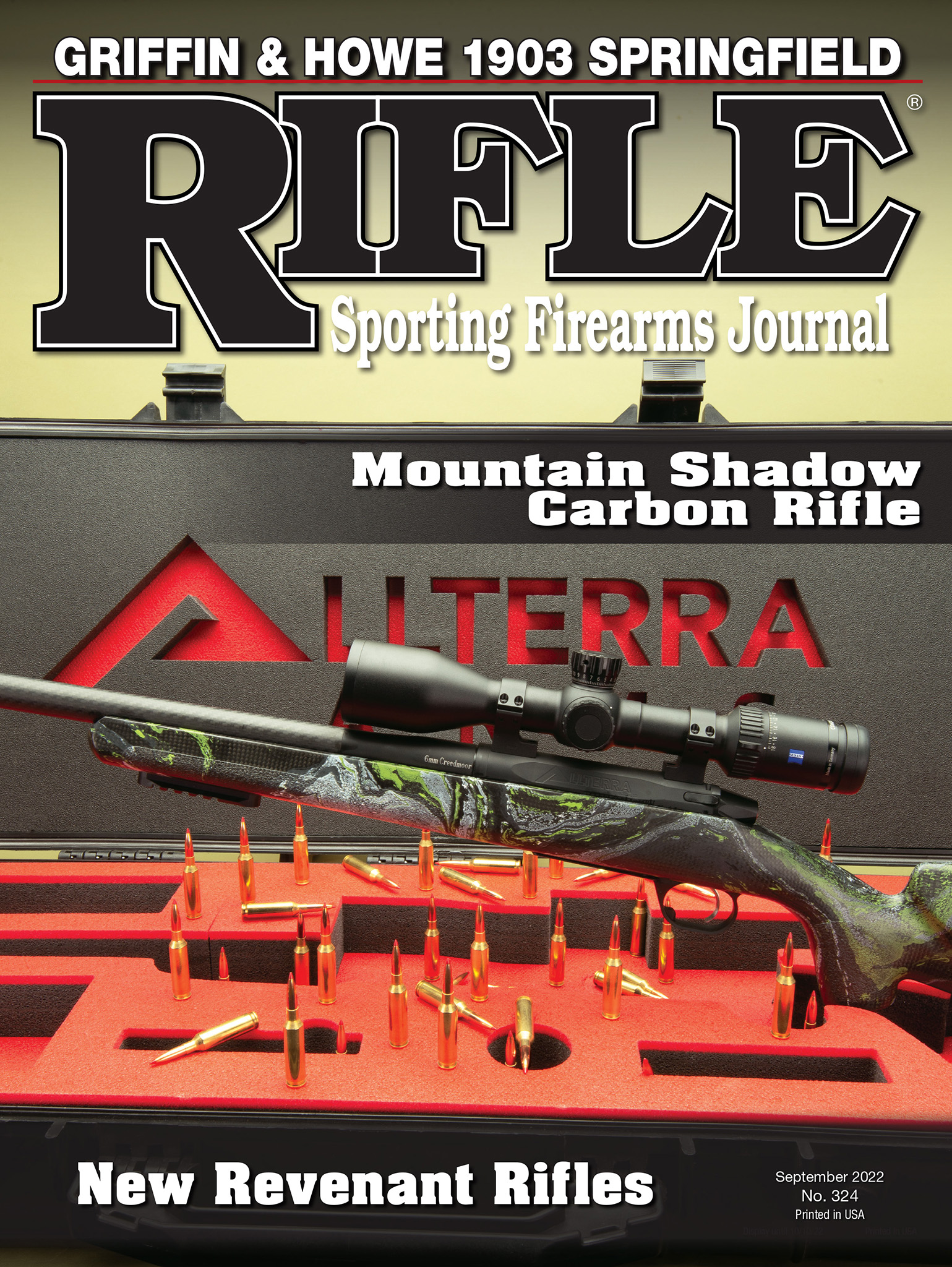Mostly Long Guns
Chappa Little Badger .22 WMR
column By: Brian Pearce | September, 22
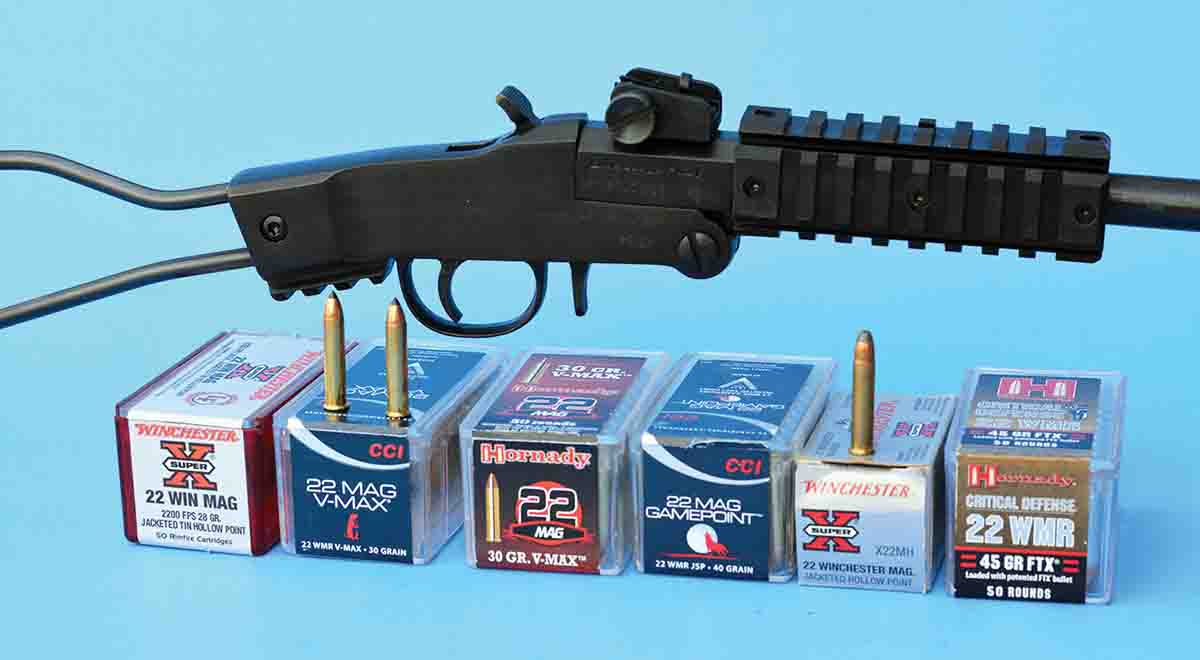
In one way or another, all good rifles are interesting. The Chiappa Little Badger is a good rifle, but its unique, simple design makes it especially interesting. It is compact, lightweight, inexpensive and very useful. It will find favor with backpackers, or serve handily as a camp gun, but is also an excellent training rifle for children. Its compact size allows it to be easily stored in the trunk of a car or behind (or even under) the seat of pickups and is always ready should an unexpected event occurs wherein a rimfire rifle becomes valuable.
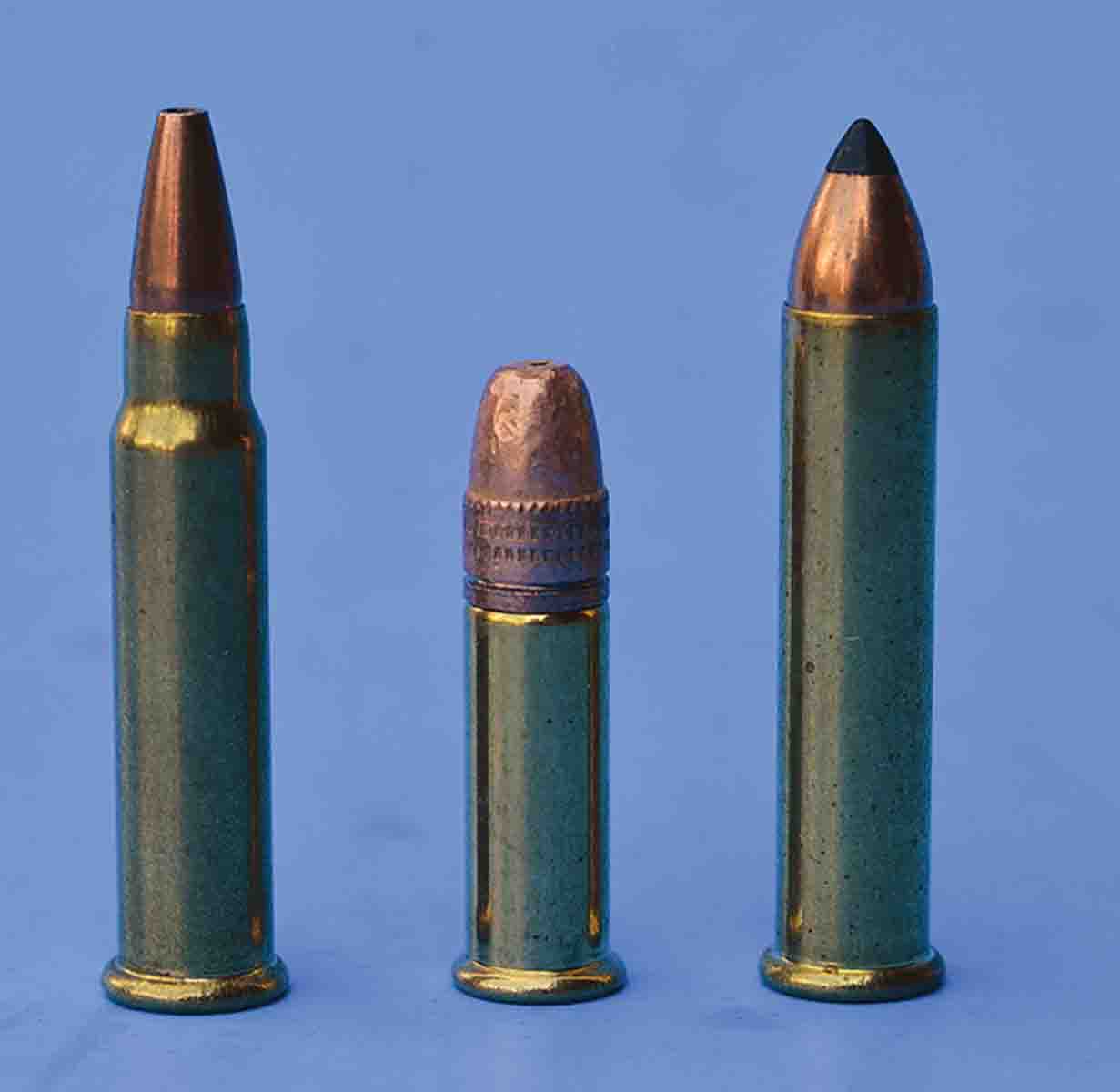
The Little Badger is a single shot that weighs a mere 47 ounces (2.93 pounds) and has an overall length of 30.5 inches. It is a break-open action with an exposed hammer. However, when the opening lever is pulled to unlock the action for loading and unloading, the rifle can essentially be folded in half, resulting in an overall length of just over 17 inches. The length of pull as set by the factory is 12.5 inches, but is adjustable. A small soft case is provided for when it is in the folded position.
The barrel measures 16.5 inches and is threaded for accessories. The rear sight is an aperture and fully adjustable for windage and elevation. The front sight is a post-style with protective wings. The forearm measures approximately 4 inches long and has four sides that are Picatinny-pattern to house accessories such as a scope, laser or reflex sight. The stock is a skeleton-style that consists of two .236 inch, or 6mm steel wires or bars that tie into the buttplate. There is a cartridge storage system just forward of the buttstock that holds 12 cartridges.
Naturally, the barrel and other high-stress parts are constructed of steel, the receiver is alloy, while the sights, forearm, buttplate and trigger guard are constructed of a hard polymer. This all serves to keep the cost and weight down. Working action parts (all steel) are simple and should offer respectable durability.
The Little Badger is offered in .17 Hornady Magnum Rimfire, .22 Long Rifle (also accepts .22 Short and .22 Long cartridges) and .22 Winchester Magnum Rimfire (WMR) or more commonly known as .22 Magnum. For this review, a rifle chambered in the .22 WMR was selected due to its outstanding versatility. I first began using this cartridge in 1972 and have developed immense respect for it. During that era, the only loads readily available included 40-grain jacketed solid and hollowpoint loads from Winchester and CCI that were listed at 2,000 feet per second (fps), today reduced to around 1,910 fps. I took many coyotes, bobcats, raccoons, mink, etc. on my trapline using the solid bullets that did little damage to pelts. However, I soon learned that solids would penetrate the skull of mature Angus and Hereford bulls that weighed more than 2,000 pounds and had very thick skulls. Today, many mobile butchers still prefer the .22 WMR loaded with solids over any other rimfire. A few years ago, a friend was treed by a large black bear and was in serious trouble, but he was fortunate to have solids loaded in his .22 WMR sixgun, wherein the bullet easily penetrated the bear’s skull and instantly ended the threat, but I digress. On the other hand, period hollowpoint loads gave outstanding performance on weasel, rock chucks, skunks and badgers.
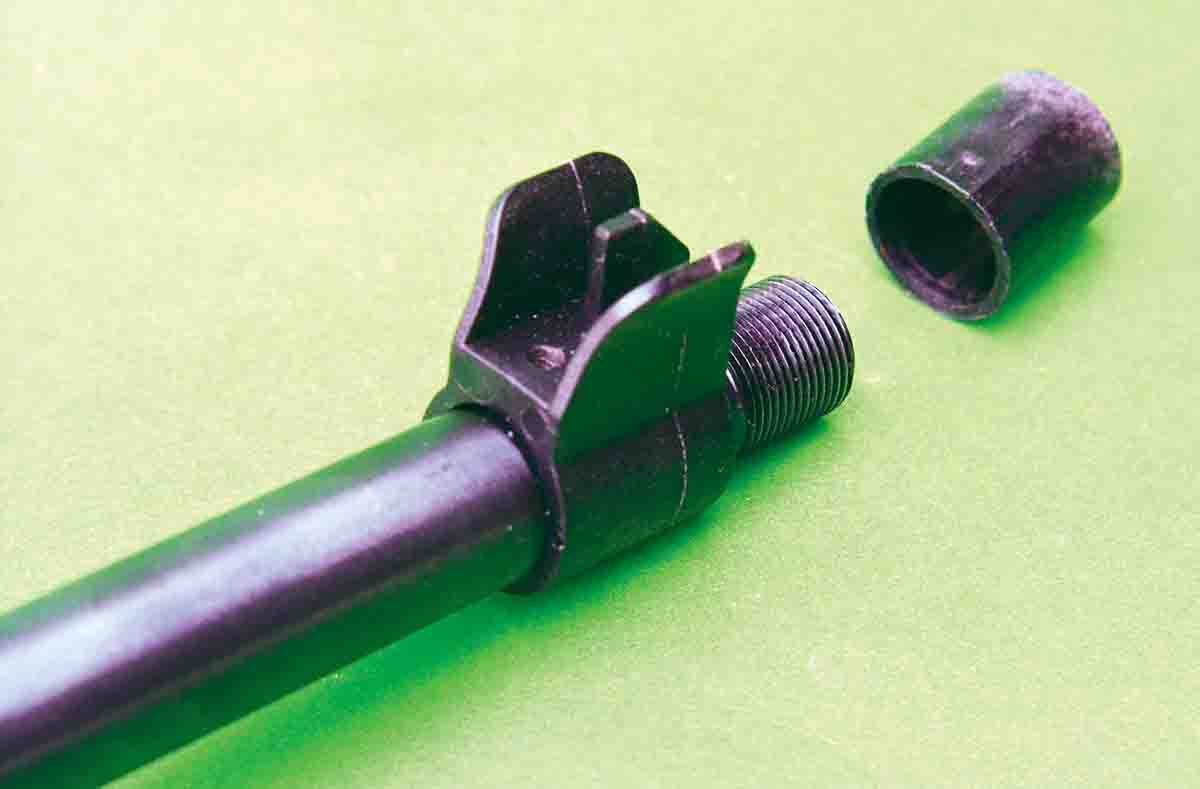
The approximate 600- to 700-fps velocity advantage of the .22 WMR over high-speed .22 LR cartridges is a huge advantage in the field, as it offers notably greater effective range. Furthermore, the bullet is a flatbase, non-heeled design, and is fully contained within the case, which results in a much more durable and robust cartridge for field use. While cost per round is notably higher than .22 LR, the .22 WMR is not really a plinker; rather, it offers greater performance and versatility when that is the priority.
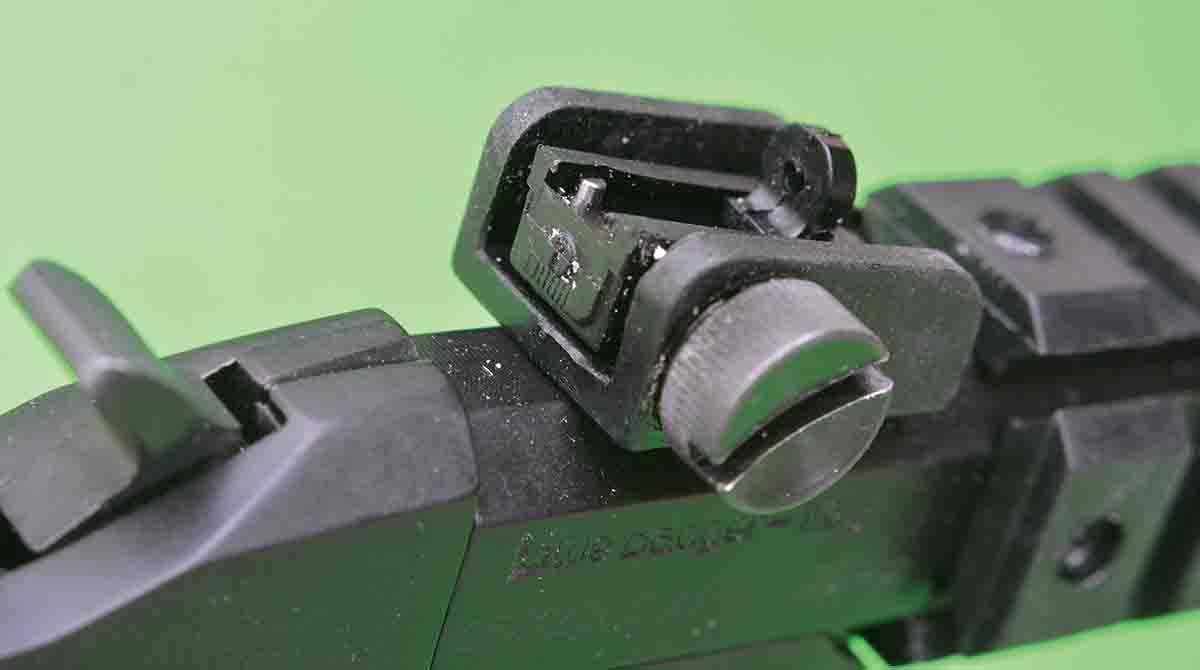
Today, there are many .22 WMR loads offered that further improve its versatility. Loads such as the Hornady 30-grain V-MAX and the CCI 30-grain V-MAX are listed at 2,200 fps, but actually clocked 2,229 and 2,346, fps respectively, from the 16½-inch barrel of the Little Badger. This excellent bullet features a spitzer profile and plastic tip to increase ballistic coefficient (BC) that serves to flatten trajectory and maximize accuracy. The performance on varmints is outstanding. I still find the above mentioned 40-grain solid
and hollowpoint loads useful for general purpose, as they can be interchanged without resighting the rifle. Hornady also offers an interesting load known as Critical Defense FTX that features a 45-grain bullet pushed to 1,700 fps.
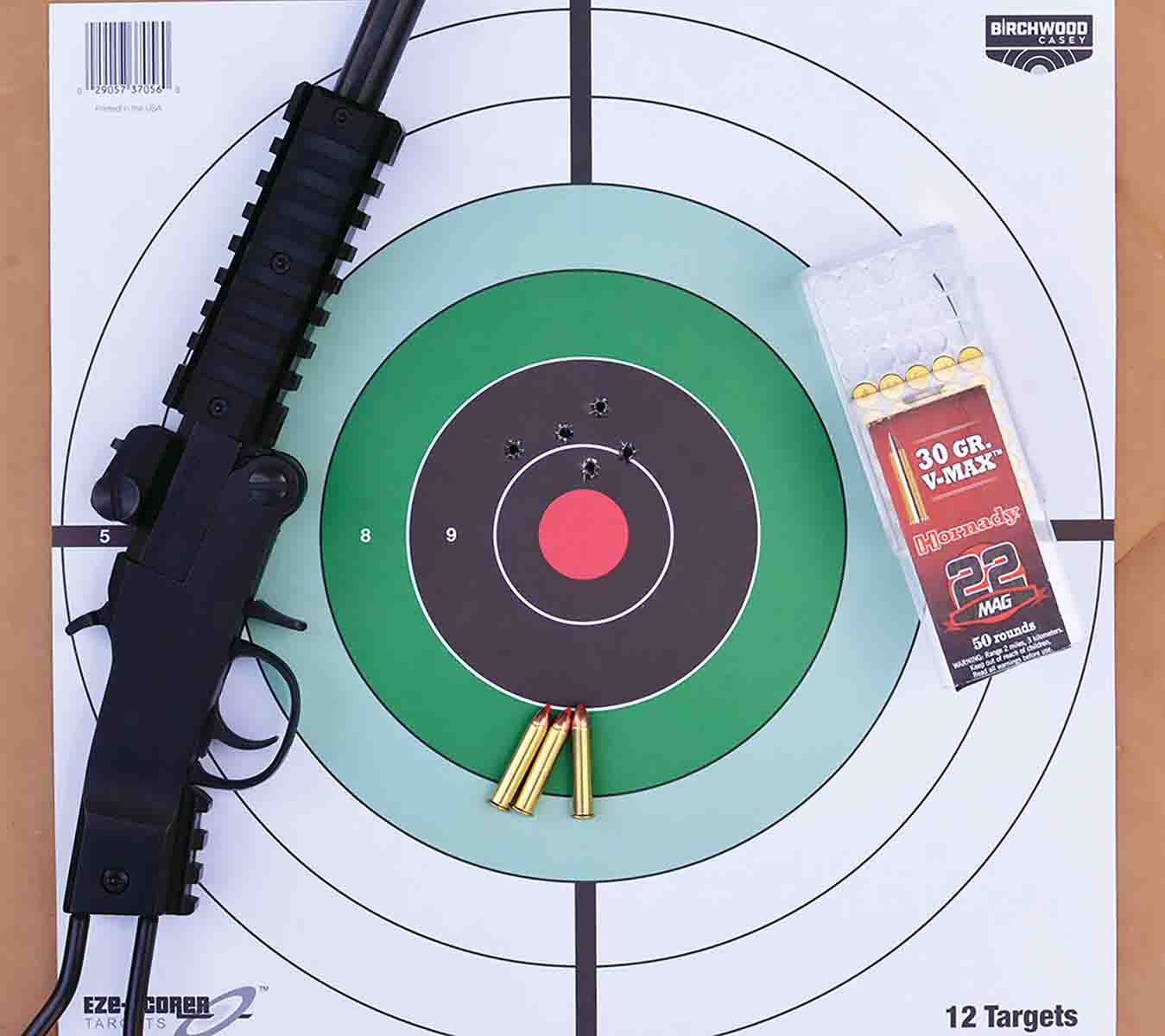
From a bench and with the aid of sandbag rests (as well as a Leupold Freedom 3-9x scope), the Little Badger offered respectable accuracy at 50 yards. As can be seen in the accompanying table, most loads placed five shots into group that hovered between 1.3 to under 2 inches. The best accuracy came from the Hornady 30-grain V-MAX that averaged three groups into 1.30 inches. This is certainly adequate accuracy for taking small game or for any other practical purpose that this little rifle will be used.
My biggest complaint is the sights. Frankly, I would like to see them constructed of steel to make them a bit more robust. The rear sight features a slide for elevation adjustments. In order to get the gun sighted in, it had to be positioned all the way down to the No. 1 of 4 positions. This slightly skewed the round “hole” appearance of the aperture. I made it work, but it could be improved.
For a rifle that can be purchased for less than $230, I didn’t expect the Little Badger to offer a great trigger pull, however, it broke cleanly at 3 pounds, 2 ounces and had very little after-travel. (This gun should only be dry-fired with a snap cap in place, or at least, a fired case placed in the chamber. Otherwise, the firing pin will hit the side of the chamber and can cause damage.)
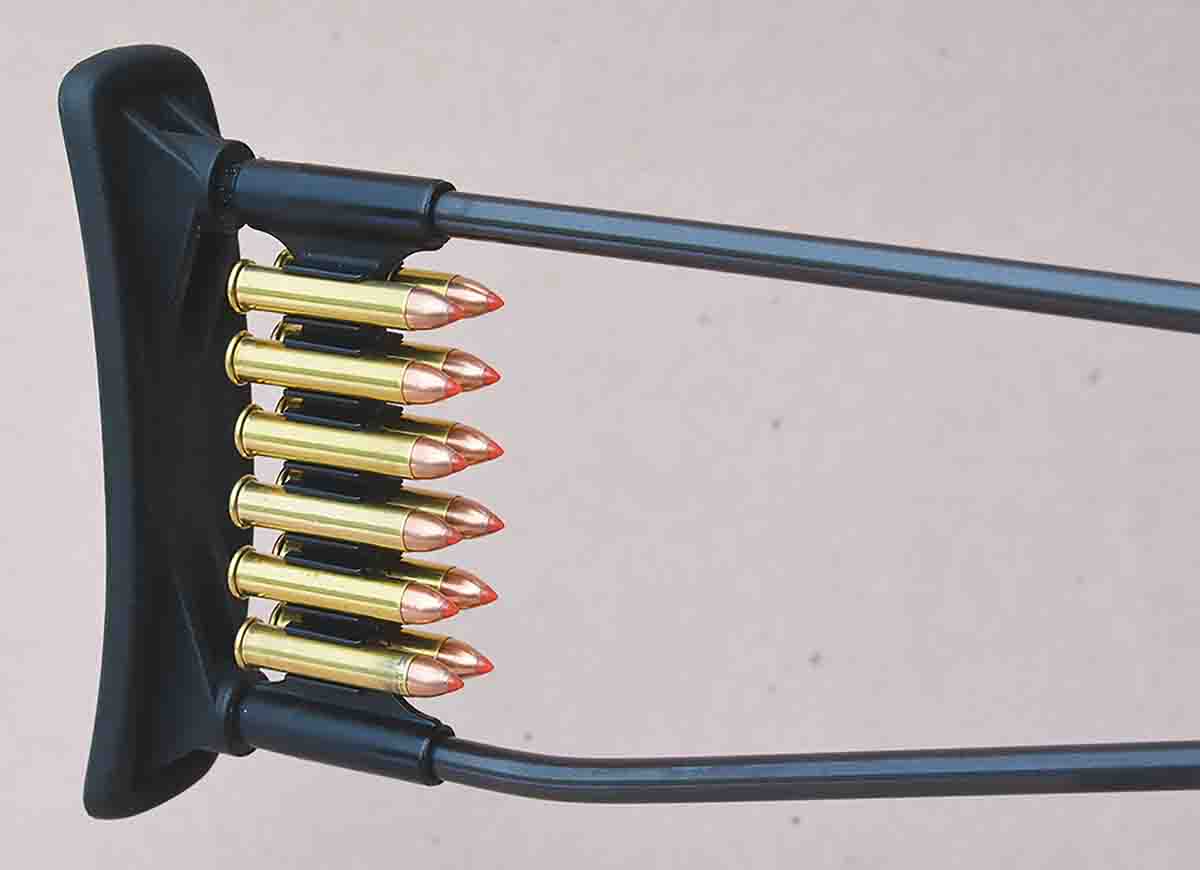
.jpg)


